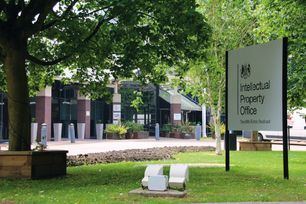Clients and climate
Kate Hilton-Balfe offers some clear ideas on how to build environmental action into your professional advice

Climate change is arguably the defining challenge of our time. As nations seem on track to fail to limit warming to 2oC – considered the greatest increase that may allow us to avoid catastrophic impacts – the time for taking real actions to reduce our negative impact on the environment is right now.
For trade mark attorneys, this doesn’t simply include personal actions such as cutting red meat out of your diet, reducing your overall consumption and increasing reuse and recycling. It also extends to how you advise your clients, for example when it comes to disposing of infringing materials.
The available remedies for a trade mark or design infringement include either delivery up of infringing goods or destruction under oath. This poses a serious sustainability dilemma for both client and trade mark attorney.
Most clients now have a sustainability policy, and requesting the destruction of infringing goods means that all of the materials, energy and fossil fuels used in producing and transporting those goods will go to waste, and more energy will have to be expended to manufacture replacements. Worse still, supposing the goods involve animal products – if, for example, they’re sausages packaged with a label bearing an infringing trade mark – destruction of the goods is not only bad from an environmental point of view but also has animal welfare implications. These animals will have lived a short and pointless life, only to end up in landfill. It’s not a particularly fulfilling existence for a sentient being.
So, the destruction of infringing goods has very few advantages from the environmental point of view. (One exception might be where using the goods will create yet more greenhouse gases – for example, if the goods have internal combustion engines or rely on fossil fuels to run, as in the case of outdoor heaters, in which case they may be better off being destroyed.)
On the other hand, the destruction of the infringing goods offers many advantages from the point of view of the IP rights holder and may have financial advantages from the point of view of the client. This poses a dilemma, where a choice must be made between financial and brand maintenance considerations and environmental considerations, which appear on the face of it to be mutually exclusive.
Charity case?
Perhaps the client can be persuaded to accept that the infringer donates the infringing goods to a charity, with appropriate verification, as an acceptable remedy. But the risk here is that goods donated to charity may pop up in the aftermarket or on secondary auction websites for a long time after they are donated. In that case, the rights holder will have no way of knowing if these are the same infringing goods or a different set. Legal costs and litigation will persist.
Another option is for the rights holder to obtain delivery up of the goods and then arrange to sell them through a verifiable channel, so that the rights holder knows where the goods have been sold. This has the obvious problem that the rights holder is placing non-genuine products on the marketplace, and there may be a subsequent downside to this in weakening the rights holder’s brand and reputation.
A further option is for the rights holder to obtain delivery up and then ship the products outside of any territory where the rights holder has trade mark or design rights itself, or to require that the infringer arranges to do this with appropriate verification. Again, the problem arises that even in a territory in which the rights holder has no trade mark or design rights, its brand may still be known. Having non-authorised or non-genuine articles in that market may then perpetuate damage to the rights holder’s reputation and brand.
One last option is for the rights holder to permit sales of the remaining infringing articles, subject to the necessary assurances and payment of damages being obtained from the infringer. An account of the profits and legal costs will enable you to make a balanced judgment of whether the client’s sustainability and environmental policy is more important than its brand quality and brand maintenance policy. Ultimately, is it more important that a client company operates sustainably and with minimum environmental impact, or is it more important that the client company operates with strong brand values?
Of course, while a trade mark attorney can give the options to the client, it is ultimately down to the client to decide how to prioritise its own corporate policies and values and determine how they should be implemented. However, as individuals and IP firms, we must all play our part and work with our clients to take every opportunity to reduce greenhouse gas emissions, global warming and our overall negative impact on the environment.
Other ways to put sustainable principles into action include:
- Putting a sustainability policy in place – and publicising it. You would not want to be at a disadvantage when seeking corporate trade mark work because your firm is not making clear its sustainability policy or has failed to satisfy the sustainability policy criteria of a potential client. Those policies should also include using suppliers that have effective sustainability policies of their own.
- Reducing your energy consumption. Even if you use a “green” tariff based on renewable energy sources, it is a good idea to reduce your energy consumption. When it comes to heating, the Health and Safety Executive’s Approved Code of Practice specifies that workplaces should be kept above 16oC, but workers can ask management to keep the temperature as low as possible.
- Reducing your water consumption. Suggestions include introducing a rainwater recycling system for any uses which require non-drinkable water, encouraging colleagues to boil and use only as much water as they need, and installing low-flow plumbing fixtures for toilets and aerators for faucets.
- Organising for change. Set up an environmental committee, preferably with approval from your employer. Encourage your firm to improve its environmental performance, perhaps by working towards ISO 14001 Environmental Management certification or the PAS 2060 Carbon Neutrality Specification. You could also try bringing in speakers and training, such as carbon literacy training, or running campaigns such as “Meat Free Mondays”.
Kate Hilton-Balfe is a Trainee Trade Mark Attorney at Franks & Co.
Read the magazine





